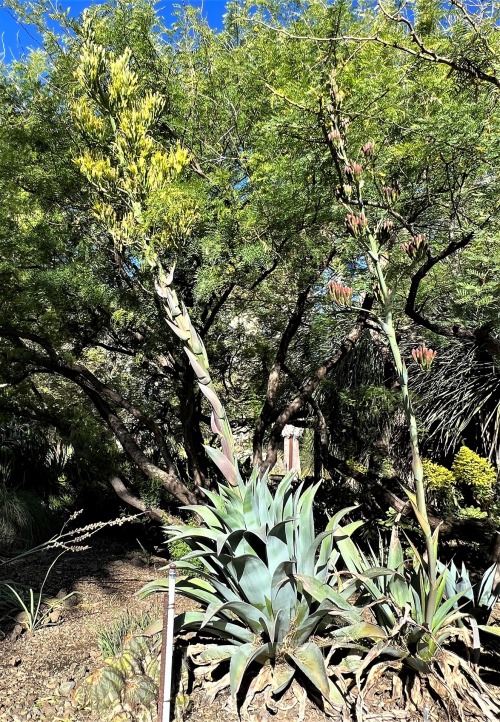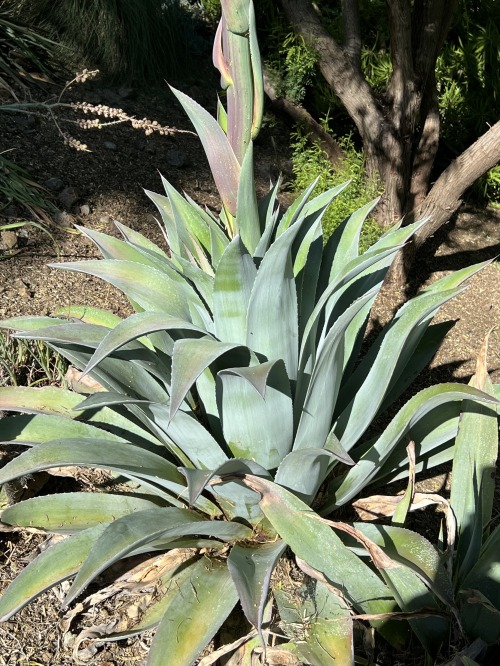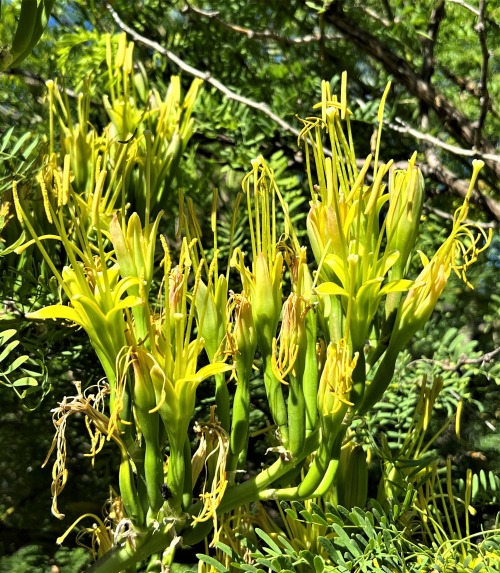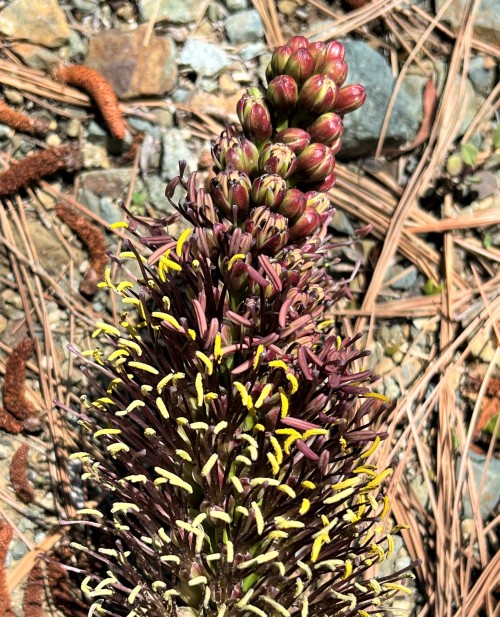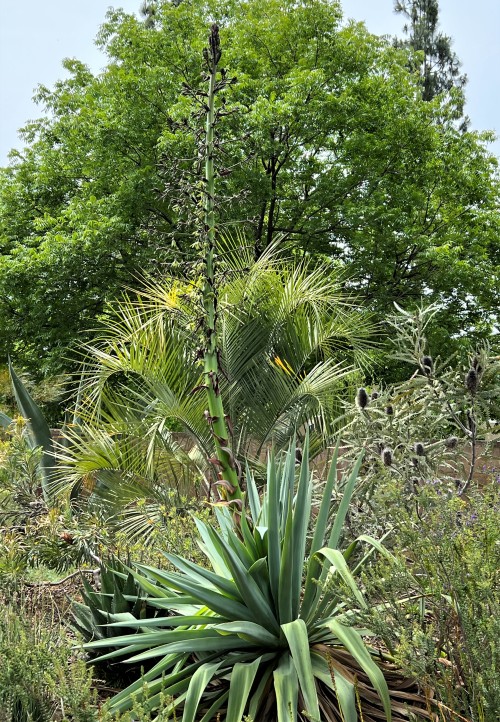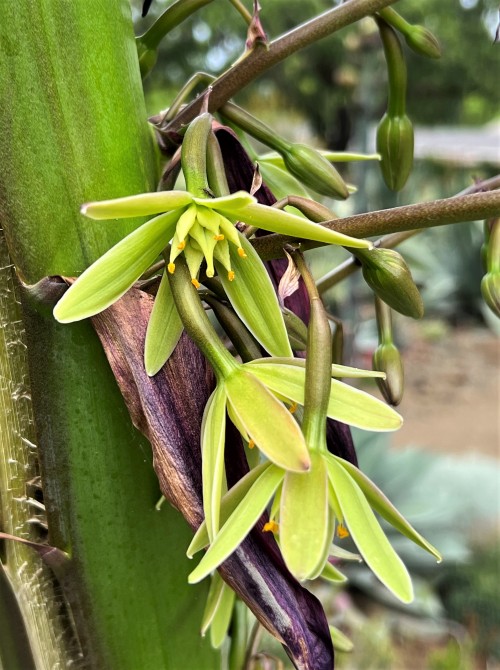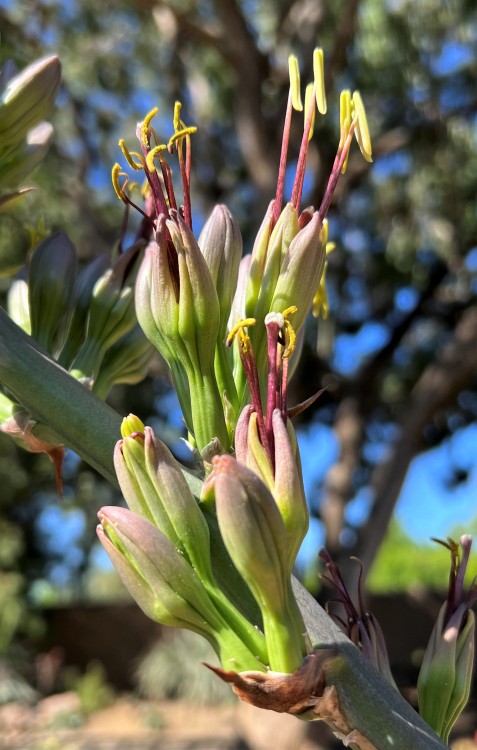#agavoideae
Agave parrasana × Manfreda ‘Dit Dah’
There are many more Mangave plants available now than there were when I made this hybrid ten years ago. Its mother is Agave parrasana, from Coahuila in northern Mexico, and its father is a Manfreda hybrid I had done years earlier. It is very similar to its sibling ‘Blue Fountain’, whose picture I posted in Dec. 2021. What I especially like about these 2 plants is the way the leaves seem to erupt upward, rather than splaying outward as many Mangave cultivars do. Though the leaves have spots, they are subtle.
-Brian
Post link
Agave rzedowskiana
This small Agave species comes from Jalisco, to the north of Guadalalajara, and it is not common in cultivation. Its pale blue rosette of leaves is very attractive, even if its flowers are a little underwhelming. But the flowers are unusual in the way the buds are like red-tinged glossy spheres.
-Brian
Post link
Furcraea quicheensis
The genus Furcraea is related to Agave, and they have the same growing habit of waiting many years to reach maturity, then sending up a giant stalk and coming into flower at the ends of their lives. Furcraea quicheensis is an uncommon species, native to the Mexico-Guatemala border region. Like other species of Furcraea (but unlike Agave), it has pendulous flowers, in this case with a greenish-yellow color.
-Brian
Post link
×Mangave ‘Mayan Queen’
Agaves, often called Century Plants, are well known in horticulture, but their soft-leaved relatives in the genus Manfreda are less often encountered. Manfreda is very closely related to Agave, and in recent years many authorities have advocated for its inclusion within Agave, but this has not really caught on in horticulture. Manfreda flower stalks are generally shorter and less showy than those of their relatives, but many of the species have an attractive trait not seen in regular agaves - purple spots. In recent years, many crosses between Aagve and Manfreda have been introduced, and these are listed under the name ×Mangave (the multiplication sign at the beginning is to show that this a cross between 2 different genera, not a real genus, but the name is often written simply as Mangave). The plant pictured is one of these newcomers: ×Mangave ‘Mayan Queen’, and this is the first time it has flowered here at the Ruth Bancroft Garden.
-Brian
Post link

